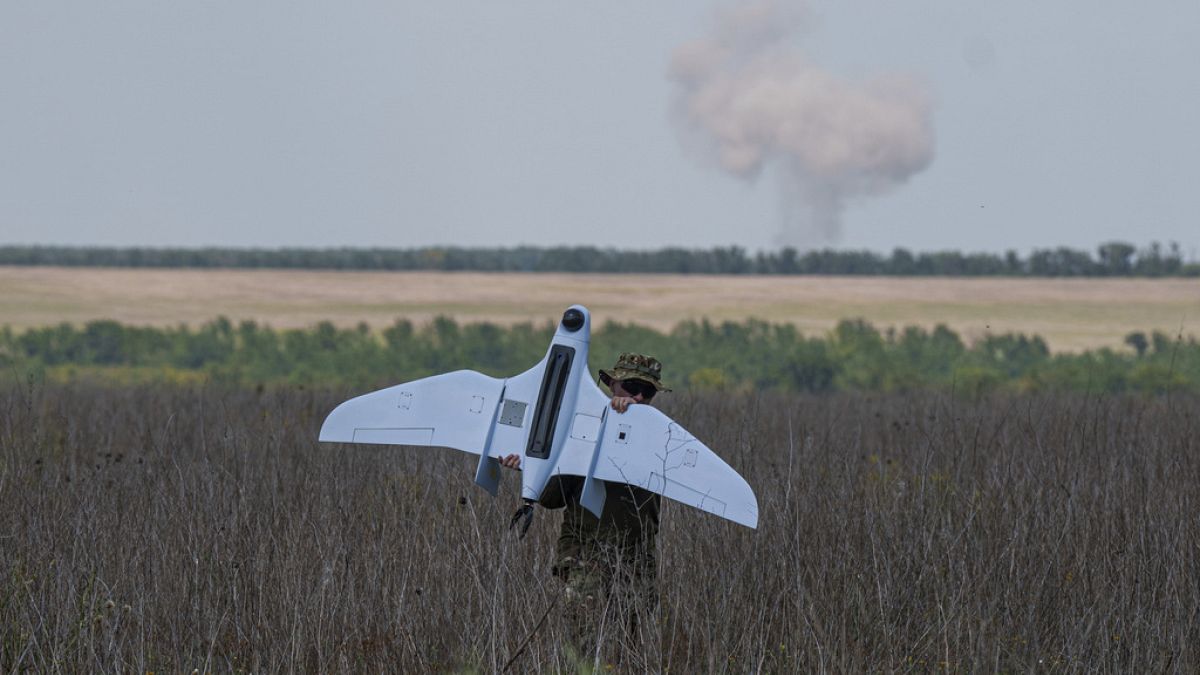Montana
Montana man kills grizzly bear that attacked while he was picking berries

A 72-year-old man picking huckleberries in Montana shot and killed a grizzly bear after the animal attacked him in a surprise encounter, injuring him badly enough that he had to be hospitalized, authorities said Friday.
The man was alone on national forest land when the adult female charged him Thursday. He suffered significant injuries before killing the bear with a handgun, said Montana fish, wildlife and parks officials.
The bear was likely reacting defensively to protect cubs, agency spokesperson Dillon Tabish said.
Wildlife workers set out game cameras in the area to try to confirm the presence of any cubs. If cubs are found, it’s uncertain if they would be captured because it is difficult to find facilities qualified to take them, he said.
“Depending on the age, we might leave them in the wild because they have a better chance of survival, rather than have to euthanize them,” Tabish said.
The attack happened on the Flathead national forest about 2 miles (3.2km) north of Columbia Falls, a north-western Montana city of about 5,500 people, according to the state wildlife agency.
The victim’s name and further details on his condition were not released.
Meanwhile, fish, wildlife and parks staff shot and killed an adult female grizzly Thursday after it had become accustomed to seeking out food from people and breaking into houses in and around Gardiner, a town of about 800 people just north of Yellowstone national park.
Pet food, garbage and barbecue grills left outside and accessible to bears contributed to the problem, according to a department statement. No people were hurt by the bear before it was shot in the Yellowstone river.
Wildlife managers sometimes capture and move grizzly bears that are known to cause problems for people. But they will kill ones involved in predatory attacks on people or if they are deemed likely to keep causing problems regardless of being moved.
The Gardiner-area grizzly was killed about 300 miles (500km) south of the unrelated attack in the Columbia Falls area. An estimated 2,000 grizzlies roam western Wyoming, eastern Idaho, western Montana, while several thousand more inhabit the Canadian Rockies and Alaska.
Grizzly bears in the contiguous US are listed as threatened under the Endangered Species Act. Elected officials in Rocky Mountain states are pressing federal officials to lift their protected status, which could open the door to future hunting.

Montana
Montana’s new bison rewilding paradigm

The prairie grasslands of central Montana have been the focal point of wild bison restoration attempts for many years. So far, past bison rewilding efforts have met with little success in our region, notwithstanding the American Prairie Reserve’s attempt to raise bison as domestic livestock for release one day as a wildlife species.
While American Prairie Reserve’s plan for creating a multimillion acre wild bison reserve remains palpable, it seems their effort is now being augmented by a new bison rewilding paradigm developed last year by Department of the Interior.
On March 23, 2023, Interior Secretary Deb Haaland issued Secretarial Order 3410 titled: Restoration of American Bison and the Prairie Grasslands. The order provides for restoring bison on tribal lands throughout the west and centers on Haaland’s precept that “restoring bison and healthy grasslands can serve as a step toward national healing and reconciliation after centuries of federal policies designed to erase Native people and their culture.”
Haaland’s playbook calls for the translocation of bison from various places to Indian reservations throughout the west. While establishing bison herds on tribal lands seems inoffensive at first glance, one could argue that this tactic is part of a backdoor plan to phase in bison on native grasslands in Montana.
For example, the Blackfeet announced several years ago that they intend to release some of their bison onto adjacent national forest lands. A former superintendent of Glacier National Park stated that he would welcome bison that stray into the park from the Blackfeet Reservation.
Over time, there will be escaped bison from tribal lands that are left to wander because they are tough to round up and hard to retrieve. Add planned bison releases by some Montana tribes to the mix and a bison rewilding paradigm becomes reality.
But there’s more. Haaland indicates that Interior’s bison rewilding plan will not be limited to tribal lands and has directed her Bison Working Group to: “Actively pursue bison restoration on both Federal and Tribal lands; support partner restoration efforts (e.g. APR); and, pursue opportunities with other federal agencies for bison restoration on lands they manage.”
Going forward, the tea leaves seem to read that the CMR National Wildlife Refuge (CMR) will soon be revising its wildlife management plan to provide for free ranging bison on the refuge.
Bison on the CMR would be managed unfenced the same as any other wildlife species. Natural barriers, no tolerance zones and perhaps a few drift fences will be the only management tools used to control bison. Because American Prairie Reserve owns thousands of acres of private land around the CMR, bison that stray off the refuge would be welcomed on American Prairie Reserve’s private holdings and allowed to proliferate as a wildlife species. And, let’s not forget that American Prairie Reserve has also purchased land that butts up to the Fort Belknap Reservation.
Haaland portrays her bison rewilding initiative as a win-win for everyone and states that: “The best science shows that returning bison to grasslands can enhance soil development, restore native plants and wildlife, and promote carbon sequestration, thereby providing benefits for agriculture, outdoor recreation, and Tribes.”
Ready or not, it won’t be long before meta populations of free ranging bison will be scattered throughout Montana. They will leak in from tribal lands and from other federally managed lands like monuments, refuges and parks.
It’s a new bison rewilding paradigm for Montana.
Ron Poertner lives in Winifred.
Montana
Berry-picking man kills grizzly bear in Montana after it attacks

A 72-year-old man picking huckleberries in Montana shot and killed a grizzly bear after it attacked in a surprise encounter and injured him badly enough that he had to be hospitalized, authorities said Friday.
The man was alone on national forest land when the adult female charged him Thursday. He suffered significant injuries before killing the bear with a handgun, Montana Fish, Wildlife & Parks officials said.
TEEN MIRACULOUSLY SURVIVES BEAR ATTACK AFTER BROTHER RESCUES HIM: ‘A BLESSING’
The bear was likely reacting defensively to protect cubs, agency spokesperson Dillon Tabish said.
Wildlife workers set out game cameras in the area to try to confirm the presence of any cubs. If cubs are found, it’s uncertain if they would be captured because it is difficult to find facilities qualified to take them, he said.
“Depending on the age, we might leave them in the wild because they have a better chance of survival, rather than have to euthanize them,” Tabish said.
The attack happened in the Flathead National Forest about 2 miles (3.2 kilometers) north of Columbia Falls, a northwestern Montana city of about 5,500 people, according to the state wildlife agency.
A 72-year-old man killed a grizzly bear after being attacked while picking berries. (iStock)
The victim’s name and further details on his condition were not released.
Meanwhile, Fish, Wildlife & Parks staff shot and killed an adult female grizzly on Thursday after it had become accustomed to seeking out food from people and breaking into houses in and around Gardiner, a town of about 800 people just north of Yellowstone National Park.
Pet food, garbage and barbeque grills left outside and accessible to bears contributed to the problem, according to a department statement. No people were hurt by the bear before it was shot in the Yellowstone River.
Wildlife managers sometimes capture and move grizzly bears that are known to cause problems for people. But they will kill ones involved in predatory attacks on people or if they are deemed likely to keep causing problems regardless of being moved.
CLICK HERE TO GET THE FOX NEWS APP
The Gardiner-area grizzly was killed about 300 miles (500 kilometers) south of the unrelated attack in the Columbia Falls area. An estimated 2,000 grizzlies roam western Wyoming, eastern Idaho, western Montana, while several thousand more inhabit the Canadian Rockies and Alaska.
Grizzly bears in the contiguous U.S. are listed as threatened under the Endangered Species Act. Elected officials in Rocky Mountain states are pressing federal officials to lift their protected status, which could open the door to future hunting.
Montana
State firefighters to combat blazes in Montana

A crew of 20 wildland firefighters will be sent to Helena, Montana to help battle a large fire that has burned thousands of acres of land.
The firefighters will be working to put out one of the nine large, active and uncontained fires that have already burned almost 46,000 acres across the state, according to the state Department of Conservation and Recreation (DCR).
The department added that this is the first time a DCR crew is being deployed to assist with increased fire activity across the northwest, California and the Rocky Mountain states.
-

 News1 week ago
News1 week agoVideo: Biden ‘Is a Fighter,’ Harris Says in North Carolina
-

 Movie Reviews1 week ago
Movie Reviews1 week agoFilm Review: Fly Me to the Moon – SLUG Magazine
-

 World1 week ago
World1 week agoJapan, Germany agree to boost security cooperation in Pacific
-

 Politics1 week ago
Politics1 week agoTwo key states to see massive GOP voter registration operation
-

 Politics1 week ago
Politics1 week agoIs it too late for DNC delegates to abandon Biden? A look at the Democrats' nomination process
-

 Politics1 week ago
Politics1 week agoBiden says 'anyway' at least 9 times while trailing off in press conference
-

 News1 week ago
News1 week agoWhy the next president's judicial appointments will impact climate action
-

 World1 week ago
World1 week agoMore than 60 people missing after two buses swept into river in Nepal















